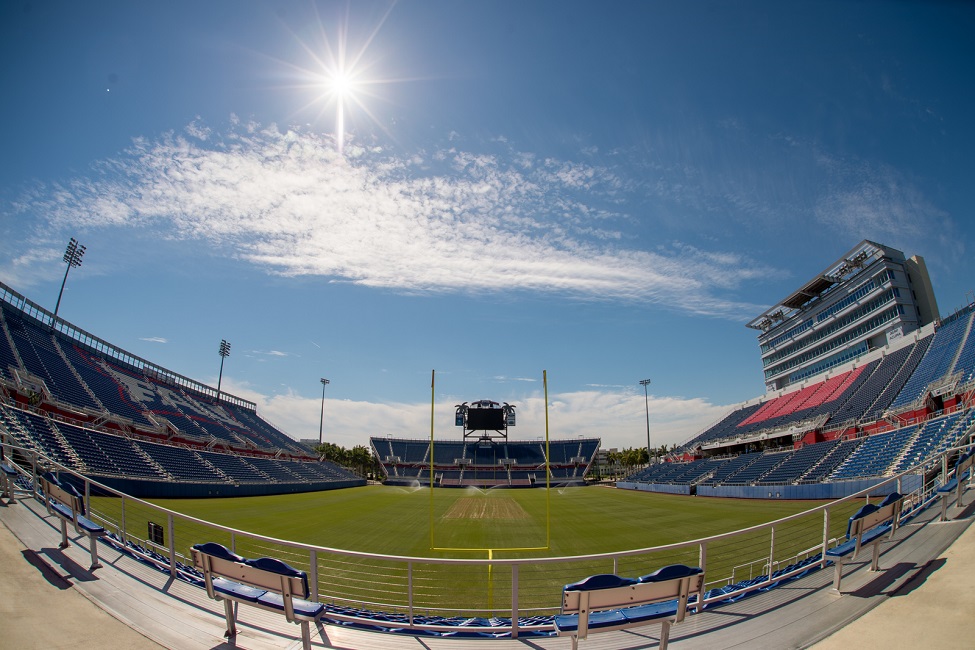Empty Stadiums Present New Challenge for Sports Marketers

One of the best ways to promote a product or company is to buy advertising or sponsorships at a sporting event, but marketers need a new game plan now that many stadiums are empty due to the coronavirus pandemic.
Businesses and organizations that traditionally advertised with scoreboard signs, public address announcements and family fun zone sponsorships are having to redeploy marketing dollars and find new opportunities inside fanless stadiums and arenas that are likely to remain that way into next year.
“If there’s no crowd inside a stadium, a company’s sign on the scoreboard is going to have virtually no impact,” said James Riordan, Ph.D., director of the MBA Sport Management program in Florida Atlantic University’s College of Business. “Marketers need to go where they will get the greatest value out of their investment. They need to be where the eyes and ears are: television and radio.”
While some college and NFL teams, including the FAU Owls, Miami Dolphins and Jacksonville Jaguars, allow for reduced stadium capacity, other teams and leagues have returned to play without any spectators. Either way, the value of in-stadium advertising or sponsorships is greatly reduced, according to Riordan.
Industry executives like Brooklyn Nets owner Joe Tsai, Boston Red Sox President and CEO Samuel H. Kennedy and others have expressed concerns about stadiums remaining empty or less than half full into 2021.
Riordan said FAU’s MBA Sport Management program has adjusted its marketing approach for this pandemic reality by increasing radio advertising during the 2020 football season. The program will sponsor the pregame radio show and have an additional presence during the broadcast and on the post-game show.
Additionally, the program boosted its social media and website placements and bought new signs at FAU Stadium behind the two goalposts – and those prime spots provided exposure on field goals and extra points during the Owls’ 21-17 comeback victory on Oct. 3 over the University of North Carolina-Charlotte on ESPNU.
Depending on a particular stadium or arena, there may be opportunities for advertising on the tarps covering the lower rows of seats. But with no fans or reduced capacity, there generally will be fewer choice locations to place signs, and that smaller supply could lead to an increase in advertising costs, Riordan said.
“The pandemic isn’t going away anytime soon, so marketing and advertising executives need to be creative and deploy this strategy for the foreseeable future,” he said.
Riordan, who launched the MBA Sport Management program at FAU in 2000, previously held executive positions with the New York Mets and Philadelphia Flyers and handled crowd management operations for major outdoor concerts featuring the Grateful Dead, Bruce Springsteen and the Beach Boys.
-FAU-
Tags: faculty and staff | coronavirus | business